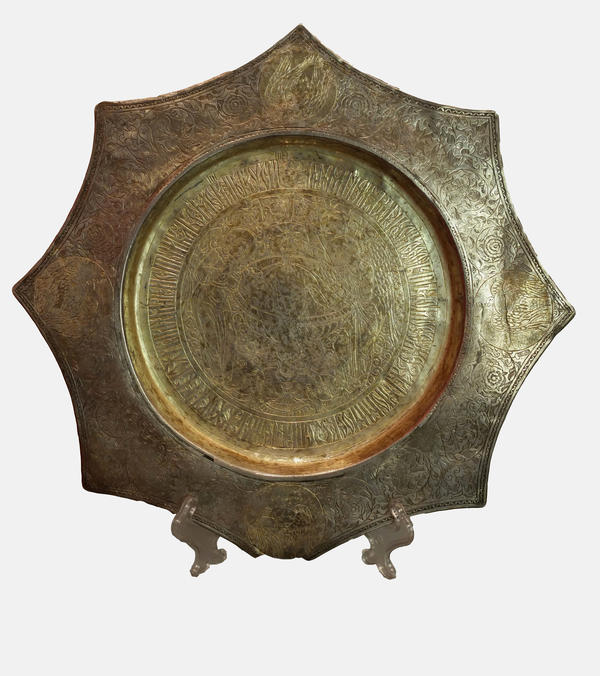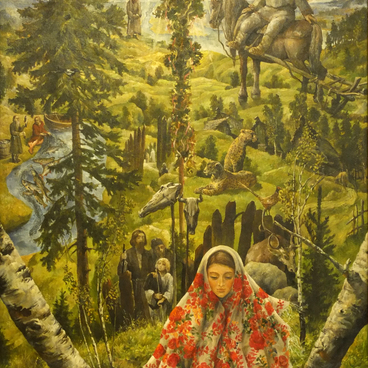The diskos is one of the main liturgical vessels used during the sacrament of Communion. It is a round dish on a base. In most cases, it is decorated with scenes from the New Testament featuring baby Jesus. During religious ceremonies, a lamb is placed on the diskos: it symbolizes the bread which, in its turn, is a symbol of Christ’s body. The vessel itself symbolizes Christ’s crib (the feeder for animals where His Mother put Him), as well as the coffin with His body. Most commonly, the diskos is used together with an asterisk, a vessel made of two strips of metal and placed one on top of the other. The asterisk is put over the diskos during communion.
This diskos from the collection of the Uglich museum was made in 1623. It has the shape of an 8-point star and its edges are decorated with vegetal ornaments: climbing plants with leaves, flowers and acorns. In the central part, there is an engraved image of baby Jesus lying in a chalice on a high fancy-shaped leg. This traditional image is called Here is the Lamb and symbolizes Christ’s sacrifice for the salvation of the mankind.
At the edges of the central bowl, there are engraved words. According to the Gospels, Jesus said them to the apostles after the Last Supper: he called bread and wine his body and blood and offered his disciples to eat them to abandon sins and tap into the source of immortality. Later on, this story became the base of the Communion ritual.



